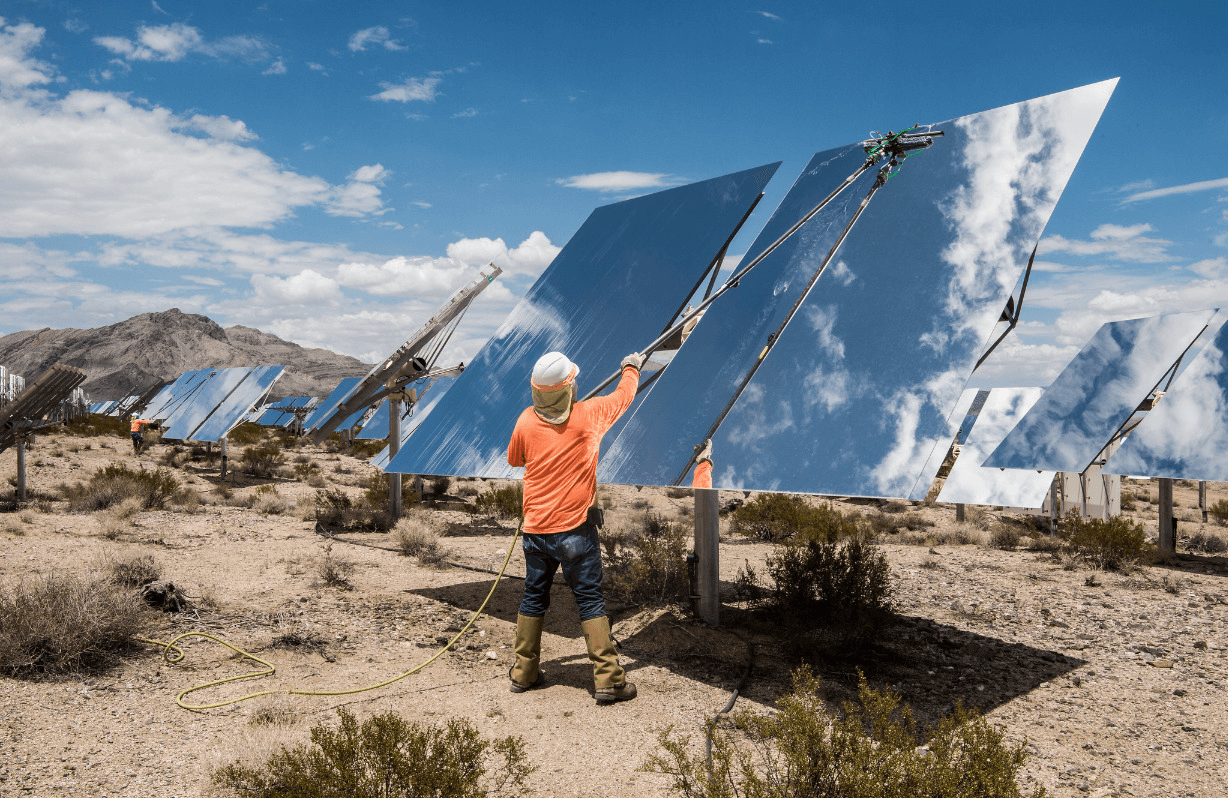100% renewable energies are possible – worldwide

A switch to renewables as main electricity source is possible.
The energy transition means a fundamental system change. There will be fewer and fewer base load power plants based on fossil fuels or uranium. Instead, renewable energies with fluctuating feed-in can and will deliver energy and ensure security of supply. Therefore, the electricity system as a whole has to become more flexible, concerning generation and demand. The options of implementation include grid expansion and the extensive digitization of local distribution grids (e.g. transformer stations), the expansion of load management (Demand Side Management) and storage and – for a transitional period – increased flexibility in the remaining conventional power plants (DIW Berlin, Wuppertal Institute, and Ecologic Institute 2018).
The storage requirement will increase to balance the fluctuating supply. The demand ranges from short-term storage, which save power for grid stabilization for less than a second, to so-called seasonal storage. Currently there is a need for development especially of seasonal storage, while many short-term storage facilities already have a high technological maturity (Viebahn et al. 2018). Long-term storage is only needed for a system that works mainly with renewable energies. Until then, these technologies will be sufficiently available. The availability of electricity storage is therefore not a limiting factor for the energy transition, neither is the nuclear phase-out (Hansen, Mathiesen, and Skov 2019; Öko-Institut e.V. and Fraunhofer ISI 2015).
The costs of the energy transition, without any assumption of future (expected) price increases for fossil fuels, are no higher than the costs that are currently used for the supply (construction, maintenance, fuel costs and financing) of electricity and heat (Henning and Palzer 2012). In addition to the reflection about what an energy system based on 100% renewable energy sources will look like, it is equally important to develop strategies for energy savings through adjusted consumer behavior (sufficiency), which means not consumed energy.
Further reading
- Hansen, Kenneth, Brian Vad Mathiesen, und Iva Ridjan Skov. 2019. „Full Energy System Transition towards 100% Renewable Energy in Germany in 2050“. Renewable and Sustainable Energy Reviews 102 (März): 1–13.
- Viebahn, Peter, Ole Zelt, Manfred Fischedick, Jan Hildebrand, Sasche Heib, Daniela Becker, Juri Horst, Martin Wietschel, und Simon Hirzel. 2018 „Technologien für die Energiewende - Politikbericht“. Wuppertal Institut for Climate, Environment and Energy; izesgGmbH; Frauenhofer ISI.
- Öko-Institut e.V. und Fraunhofer ISI. 2015. „Klimaschutzszenario 2050 - 2. Endbericht - Studie im Auftrag des Bundesministeriums für Umwelt, Naturschutz, Bau und Reaktorsicherheit“. Berlin, Germany.
- Henning, Hans-Martin, und Andreas Palzer. 2012. „100% Erneuerbare Energien für Strom und Wärme in Deutschland“. Freiburg, Germany: Fraunhofer-Institut für Solare Energiesysteme ISE.
